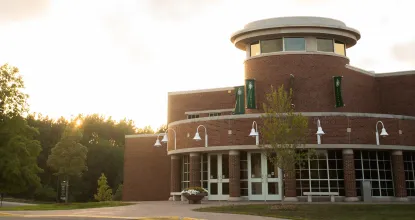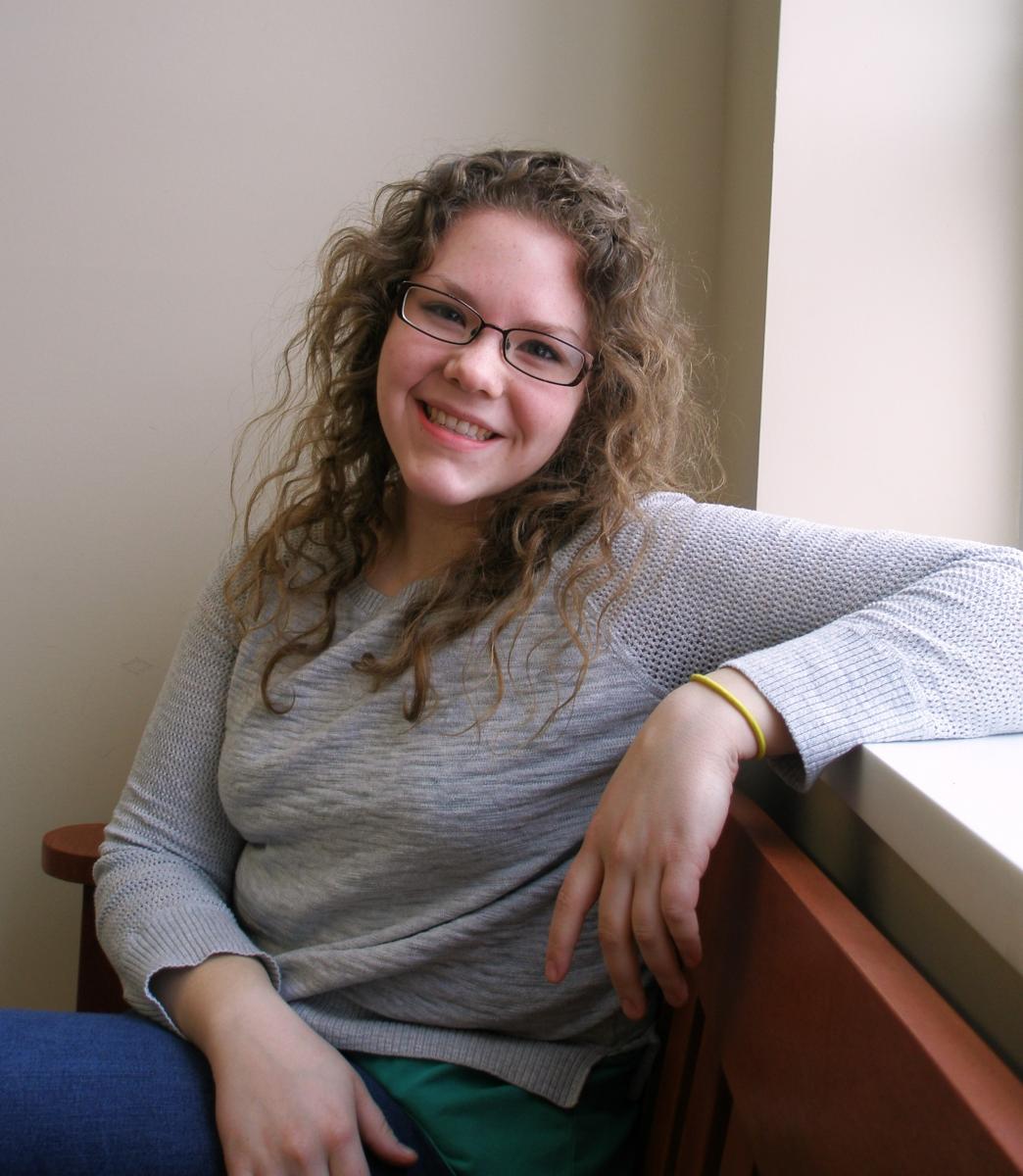
Alumni, the Northern Michigan University faculty, staff and administrators remain committed to serving you, whether you crossed the commencement stage last year or decades ago.
How can we help you continue to engage in lifelong learning, reach the next level of your professional career and remain connected to your alma mater? We’d love to hear from you. Call us at 906-227-2450 with your stories, questions and ideas. Drop your old professors a line when you have the time to update them on what’s been happening with you. You can quickly find all their contact information on the faculty directory page.
The following update provides information on some of our NMU Physics Alumni. Just click on the update below to learn more. If you would like your name and contact information to appear here simply email Michelle with everything that you would like to have included on the site.
As Northern Michigan University and the Physics Department strive for continuous improvement, we would be very interested to know what aspects of your NMU education have served you best in your career endeavors and what areas of weakness did you have when you entered your professional field.
We strongly encourage you to keep your alumni information up to date so that we can let you know about what’s happening at NMU. The alumni Web site has an online update form for your convenience.
We hope to see you back on campus for a visit, but if that’s not possible, stay connected virtually. Welcome back to NMU!
Arika Egan
A 2015 NMU Physics graduate, Arika Egan will be working as an 'independent contractor' with the NASA Develop program for ten weeks from September 14th to November 20th. They have 15 offices nationally, and she will be working at one in Wise, VA.
She be learning and using GIS and remote sensing to understand various water systems all over the world. The current project proposed for her region is analyzing various water cycles. For example, monitor and estimate drought in Ethiopia and locate indicators to predict deadly storms in the African Great Lakes region.
Micha Kilburn
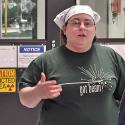 “I currently am a graduate student at Michigan State University. My research is in experimental nuclear physics and I spend most of my time at the National Superconduct Micha Kilburning Cyclotron Laboratory (NSCL)at MSU. Over the course of my time here, I’ve been heavily involved in service in the lab and physics department."
“I currently am a graduate student at Michigan State University. My research is in experimental nuclear physics and I spend most of my time at the National Superconduct Micha Kilburning Cyclotron Laboratory (NSCL)at MSU. Over the course of my time here, I’ve been heavily involved in service in the lab and physics department."
Robert Kruhlak
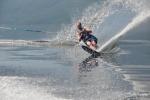
Michael McDonald

Michael McDonald graduated from NMU's Physics Program in 1959. Throughout his career in physics he has worked for companies like the Naval Research and Development Lab and NASA.
Michael graduated from NMU’s Physics Program in 1959. His employment career began in 1959 and spanned 32 years. From 1959-62, he was employed with the Transonic
Division of the Naval Research and Development Lab. in Carderock,Maryland. In which, he conducted aerodynamic testing of scale model aircraft and missiles in the
Transonic Wind Tunnel.
Rick Mengyan
 “I graduated from NMU in May of 2007 with a bachelor’s degree in physics and mathematics and earned a master’s degree in the spring of 2009 from Texas Tech University. I am currently a Ph.D. candidate working on a few projects, but my main interest focuses on the investigation of the microscopic distribution of magnetic fields within magnetic semiconducting materials with the prospects of potential applications in spin electronics. If all goes well with my next round of experiments, I ought to be on track for graduation from Texas Tech University in the spring of 2012." 2014 update: Rick has since graduated from Texas Tech University with his Ph.D. in physics. He is now a postdoctoral research associate at Texas Tech. Read more
“I graduated from NMU in May of 2007 with a bachelor’s degree in physics and mathematics and earned a master’s degree in the spring of 2009 from Texas Tech University. I am currently a Ph.D. candidate working on a few projects, but my main interest focuses on the investigation of the microscopic distribution of magnetic fields within magnetic semiconducting materials with the prospects of potential applications in spin electronics. If all goes well with my next round of experiments, I ought to be on track for graduation from Texas Tech University in the spring of 2012." 2014 update: Rick has since graduated from Texas Tech University with his Ph.D. in physics. He is now a postdoctoral research associate at Texas Tech. Read more
John Puckett
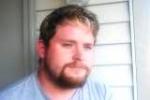
“I worked as a graduate student research assistant and laboratory manager from 2007-2010 for the Atmospheric, Oceanic and Space Sciences Department Remote Sensing Group (AOSS-RSG). My focus was on airborne, ground based and space borne passive microwave remote sensing hardware applications as well as geophysical retrieval and data analysis. In 2010, I received 2 master’s degrees from the University of Michigan. As soon as I graduated I started an internship at JST Corporation and after a few months they hired me fulltime as a concept design engineer. I can say that concepts from every physics class I took at NMU have manifested in my work at UofM and JST."
Brad Schoenrock
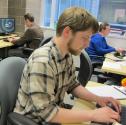 Brad graduated from Northern Michigan’s physics department in 2010, and is currently a graduate student at Michigan State University in East Lansing. There he is involved with ATLAS Experiment taking place in Geneva, Switzerland. He is analyzing data from the ATLAS detector to look for the signature of single top production in order to better understand the detectors functionality. He is also involved with an outreach project, producing a show for the Abram’s planetarium about what the LHC and the ATLAS Experiment are doing to further our understanding of physics.
Brad graduated from Northern Michigan’s physics department in 2010, and is currently a graduate student at Michigan State University in East Lansing. There he is involved with ATLAS Experiment taking place in Geneva, Switzerland. He is analyzing data from the ATLAS detector to look for the signature of single top production in order to better understand the detectors functionality. He is also involved with an outreach project, producing a show for the Abram’s planetarium about what the LHC and the ATLAS Experiment are doing to further our understanding of physics.
Ali Tasson
 “I graduated from NMU in 2004 and in 2005 completed a master’s degree in physics at Indiana University in Bloomington. Shortly after that, I started working for Indiana University Health Proton Therapy Center as a medical physicist. In 2010, my husband, Jay Tasson, finished his Ph.D. at Indiana University. The job hunt that ensued following his graduation led me to a position with Procure Treatment Centers in Warrenville, Illinois, where I worked for two years. I am now working at Mayo Clinic in Rochester, MN. I am a medical physicist for their proton therapy program, which will begin treating patients in 2015."
“I graduated from NMU in 2004 and in 2005 completed a master’s degree in physics at Indiana University in Bloomington. Shortly after that, I started working for Indiana University Health Proton Therapy Center as a medical physicist. In 2010, my husband, Jay Tasson, finished his Ph.D. at Indiana University. The job hunt that ensued following his graduation led me to a position with Procure Treatment Centers in Warrenville, Illinois, where I worked for two years. I am now working at Mayo Clinic in Rochester, MN. I am a medical physicist for their proton therapy program, which will begin treating patients in 2015."
Jay Tasson
 “As a physics student at NMU from 1999 to 2003, my interests in science and in teaching turned into a strong appetite for learning more physics and for sharing it with others, which lead me to pursue acareer in academia. After graduating from NMU, I received my Ph.D. in Theoretical Physics at Indiana University studying fundamental symmetries in the context of gravitation. I have taught physics atseveral institutions and am currently a visiting faculty member in the Physics Department at Carleton College in Northfield, Minnesota. It is a pleasure to share physics with students both in the classroom and through participation in my ongoing research, and to continue participating in the close faculty-student interactions that I enjoyed at NMU." In 2008, the following research article was published: New Constraints on Torsion from Lorentz Violation V.Alan Kostelecky (Indiana University), Neil Russell (NMU), Jay Tasson (Indiana University) Physical Review Letters 100 (2008) 111102 (http://journals.aps.org/prl/abstract/10.1103/PhysRevLett.100.111102)
“As a physics student at NMU from 1999 to 2003, my interests in science and in teaching turned into a strong appetite for learning more physics and for sharing it with others, which lead me to pursue acareer in academia. After graduating from NMU, I received my Ph.D. in Theoretical Physics at Indiana University studying fundamental symmetries in the context of gravitation. I have taught physics atseveral institutions and am currently a visiting faculty member in the Physics Department at Carleton College in Northfield, Minnesota. It is a pleasure to share physics with students both in the classroom and through participation in my ongoing research, and to continue participating in the close faculty-student interactions that I enjoyed at NMU." In 2008, the following research article was published: New Constraints on Torsion from Lorentz Violation V.Alan Kostelecky (Indiana University), Neil Russell (NMU), Jay Tasson (Indiana University) Physical Review Letters 100 (2008) 111102 (http://journals.aps.org/prl/abstract/10.1103/PhysRevLett.100.111102)
Sam Towers
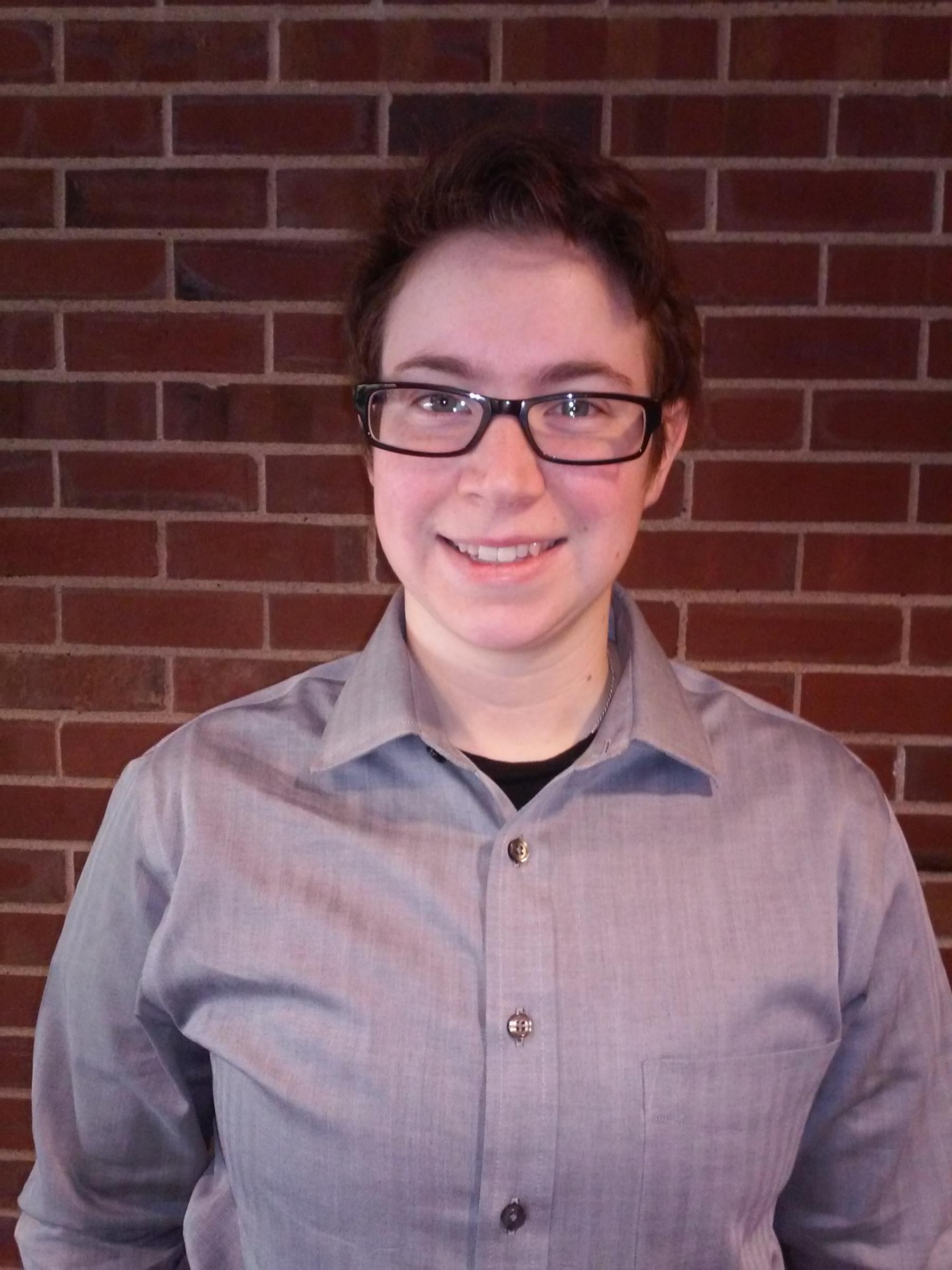 “I graduated from Northern Michigan University in December 2008. In the 09-10 school year I studied at Stony Brook University on Long Island gaining invaluable research experience. Now I am attending Western Michigan University to earn a Ph.D. in physics with an emphasis on astrophysics I have been able to experience many research opportunities such as studying young stars, galactic dynamics and stellar nucleosynthesis. My favorite experience so far is my 12 days of telescope time in Nobeyama, Japan. I also really enjoy teaching astronomy laboratory classes and hope to some day get a position at a small university, much like NMU, teaching and doing research. The physics department at Northern provided a great environment to learn and prepared me for many of the classes I have to take now. The physics teachers at NMU showed great dedication to their students and to the art of teaching and I model myself after those experiences. I consider my time at Northern as some of the best years of my life."
“I graduated from Northern Michigan University in December 2008. In the 09-10 school year I studied at Stony Brook University on Long Island gaining invaluable research experience. Now I am attending Western Michigan University to earn a Ph.D. in physics with an emphasis on astrophysics I have been able to experience many research opportunities such as studying young stars, galactic dynamics and stellar nucleosynthesis. My favorite experience so far is my 12 days of telescope time in Nobeyama, Japan. I also really enjoy teaching astronomy laboratory classes and hope to some day get a position at a small university, much like NMU, teaching and doing research. The physics department at Northern provided a great environment to learn and prepared me for many of the classes I have to take now. The physics teachers at NMU showed great dedication to their students and to the art of teaching and I model myself after those experiences. I consider my time at Northern as some of the best years of my life."
Sam and Robert Towers
Update: December 11, 2013. Physics alums, Sam and Robert Towers, are the proud parents of their first child, William, who was born in Marquette. Sam and Robert recently returned to live in the Marquette area. They own Taiga Games, a board game store, located on Third Street in Marquette. Both Sam and Robert teach physics labs as adjunct instructors.
Daniel Welling
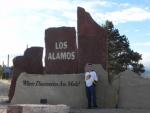 “I’m starting my third and final year as a post-doctorate at the Los Alamos National Lab in New Mexico. I work on numerical simulations of the Near-Earth space environment with a focus on examining the sources of magnetospheric plasma. I defended my thesis in November 2008, and graduated from NMU in May 2003”.
“I’m starting my third and final year as a post-doctorate at the Los Alamos National Lab in New Mexico. I work on numerical simulations of the Near-Earth space environment with a focus on examining the sources of magnetospheric plasma. I defended my thesis in November 2008, and graduated from NMU in May 2003”.
Shun Yanai
 “I am moving to Delft University of Technology (Netherlands) for Doctoral study. The focus of the lab at Delft is to make electromechanical devices wiht graphene and carbon nanotubes. While a student at NMU, activities that I participated in as a member of the Physics Club were really fun, and the Physics courses that I took helped a lot as I continued my education. One of the reasons I chose NMU was that I really liked the location. The city is beautiful, and it's close to the lake."
“I am moving to Delft University of Technology (Netherlands) for Doctoral study. The focus of the lab at Delft is to make electromechanical devices wiht graphene and carbon nanotubes. While a student at NMU, activities that I participated in as a member of the Physics Club were really fun, and the Physics courses that I took helped a lot as I continued my education. One of the reasons I chose NMU was that I really liked the location. The city is beautiful, and it's close to the lake."
If you are an NMU Physics Alumni and would like to be included on our web page, please send an email with a short biography and picture to ddonovan@nmu.edu
More about Jay Tasson
NMU Physics alumnus Jay Tasson of Ishpeming, who is currently pursuing his PhD in physics at Indiana University, was recently mentioned in the nationally distributed APS (American Physical Society) News. Jay is working with Dr. Alan Kostelecky at IU searching for possible violations of general relativity (Einsteins' theory of gravity) through the investigation of Lorentz symmetry. NMU physics faculty, Dr. Neil Russell, has collaborated with Dr. Kostelecky for many years on this investigation and continues to work in this field (see photos on this web site of the posters Dr. Russell created involving this work). Congratulations to Jay for his outstanding progress.
Here is the article:
New Ways Suggested to Probe Lorentz Violation
Lorentz invariance, a basic building block of relativity, holds that the laws of physics remain the same for observers traveling at constant speeds relative to each other, or rotated with respect to each other. Some theoretical models, called standard model extensions, have predicted violations of Lorentz symmetry. At the April Meeting, several theorists reported on ways Lorentz violation might turn up in various experiments.
“All of known physics depends on Lorentz symmetry,” Matt Mewes of Marquette University said in a press conference at the April Meeting. If that symmetry is not exact, there will be some small defects in everything else. He likened Lorentz symmetry to a building block on which much of the rest of physics rests. If the Lorentz symmetry block was slightly chipped, the whole structure on top of it would lean slightly. So by making very precise measurements of many different physical phenomena, one could expect to see evidence of Lorentz violation.
One way to look for Lorentz violation is in the cosmic microwave background polarization, Mews suggested. Recent experiments have measured the polarization of the CMB at different positions in the sky. An unexpected twist in that polarization would indicate a breakdown of relativity. Mews, in collaboration with Alan Kostelecky of Indiana University, analyzed data from the CMB experiment BOOMERANG, looking at many different parameters. They found that the results hint slightly at potential unexected twist in the polarization. Future experiments will be needed to verify this. The CMB polarization is a good way to look for relativity violations because the longer light travels, the more chance it has to undergo this slight rotation, said Mews. No other light has traveled further than the CMB.
Jay Tasson of Indiana University described another way to look for violations of general relativity. Torsion is a warping of space and time in addition to the curvature of spacetime that Einstein’s general relativity predicts. Such a warping, predicted by some alternative theories of gravity, would cause particles’ spins to precess. A University of Washington experiment used large number of electron spins to detect these effects. A complementary approach by a Harvard group used microwaves emited by a helium-xenon master to measure changes in the spin orientation of neutrons. Tasson and Kostelecky used these measurements to determine limits on 15 of the 24 quantities that would describe torsion. So far, no evidence of torsion has been observed in these extremely sensitive measurements, Tasson reported.
Still another place to look for Lorentz violation is by searching for tiny variations in the moon’s orbit about the earth. Quentin Bailey of Embry-Riddle Aeronautical University described how researchers looked at data from a laser ranging experiment that bounced lasers off mirrors placed on the moon by astronauts. The scientists used that data to measure parameters that would reveal any deviation from general relativity. In addition, another experiment, performed at Stanford, tracked the gravitational force felt by atoms very accurately, looking for tiny deviations from what general relativity predicts. These experiments are all very sensitive, to several parts in ten billion. All measurements were consistent with general relativity, Bailey reported.
Although no solid evidence of Lorentz violation has been found so far in any experiment, there is still room for ever more sensitive experiments to search for the effect, the researchers said.
“New Ways Suggested to Probe Lorentz Violation.” APS NEWS June 2008: Volume 17, No. 6: page 3. www.aps.org/publications/apsnews.
More about Michael McDonald
Michael graduated from NMU’s Physics Program in 1959. His employment career began in 1959 and spanned 32 years. From 1959-62, he was employed with the Transonic
Division of the Naval Research and Development Lab. in Carderock,Maryland. In which, he conducted aerodynamic testing of scale model aircraft and missiles in the
Transonic Wind Tunnel.
During the years, 1962-1965, he was employed at the NASA Goddard Space Flight Center, in Greenbelt, Maryland, where he supervised the development,
installation,and operation of satellite ground control stations in support of the NASA Relay Communications Satellite Project. The Relay satellite provided telephone, data, and television between terrestrial ground stations around the world. He also supervised the installation, testing, and operations of satellite ground control stations in support of the NASA Syncom Communications Project. Syncom was the world’s first synchronous communications satellite. It was developed to demonstrate telephone communicationsfrom synchronous orbit. Syncom’s synchronous or stationary orbit allowed it to be visible overhead 24 hours a day.
From 1965-1974, he was employed with the Physics and Astronomy Division at NASA Headquarters in Washington, D.C., as an assistant to the Astronomical and Solar Observatories Program Manager, where he assisted in overseeing the program’s budgets and observatory schedules including the Orbiting Astronomical Observatories (OAO) 2, and 3, and Orbiting Solar Observatories (OSO) 3, 4, 5, and 6. He also assisted in the procurement and supervision of the technical development of the Kuiper airborne Infra-red Astronomical Observatory (KOA). He was promoted to Program Manager in 1975 and was responsible for several programs including the Orbiting Astronomical Observatory 3, the Orbiting Solar Observatories 7, and 8, the Solar Maximum Mission (SMM), and the initial planning and budgeting for the International Solar Polar Mission (ISPM). The ISPM was a joint NASA and European Space Agency (ESA).
After his retirement in 1981, he became an independent technical consultant for the following: Fairchild Industries, Space and Electronics Division located in Germantown,Maryland, the National Oceanic and Atmospheric Agency (NOAA), and the Geostationary Operational Environmental Satellite (GOES) Program Office in Suitland, Maryland. During the period 1983 through 1991, he was employed by the Perkin-Elmer Corporation, Danbury, Connecticut. While at Perkin-Elmer he assisted the Perkin-Elmer’s Hubble Operations Control Manager in developing procedures for the initial
More about Robert Kruhlak
“I currently live in North Vancouver, British Columbia, Canada. Learning physics at NMU has helped me travel many places in the world. After graduating from NMU in 1993, I spent a year in the M.S.C. program in Chemistry and then moved out west to start on my Ph.D. I received my Ph.D. in Physics in 2000 from Washington State University in organic nonlinear optics. I used Labview to control optical experiments on polymer thin films and fibres. Matlab was essential for analyzing data and simulating theories of how the polymers were behaving. Since receiving my Ph.D., I have been a term limited lecturer and post-doctoral fellow in the Physics Department at the University of Auckland in Auckland, New Zealand.
During my time in Auckland, I conducted research on how light propagates in optical fibres. The most interesting are a class of fibre called microstructured or holey fibres. They typically have a pattern of air holes around the fibre core that run the entire length of the fibre, which can be kilometers long. The fraction of air around the core determines the dispersion in the
fibre. This gives the research incredible control over how intense laser light propagates in the fibre and allows us to observe nonlinear phenomena that I thought only existed in textbook theory. The most exciting has to be supercontinuum generation, where single wavelength laser light is converted as it propagates inside the fibre into a white light continuum.
I have two wonderful kids, Aiden, 7 and Justine, 4 that I am teaching about the world while my wife Nicole works full-time. When I have the time, I work as an education technology consultant. Two of my clients have been: the Open Education Resource Foundation, an independent, not for profit organization that provides leadership, international networking and support for educators and educational institutions; and the Commonwealth of Learning, an intergovernmental organization created by Commonwealth Heads of Government to encourage the development and sharing of open learning/distance education knowledge, resources and technologies."
